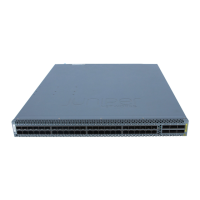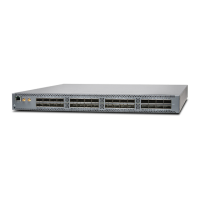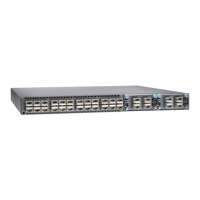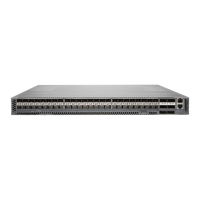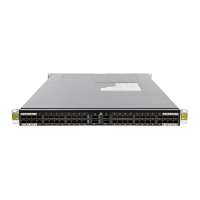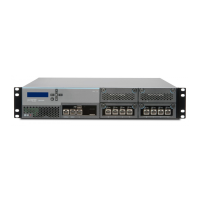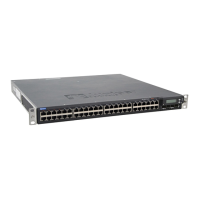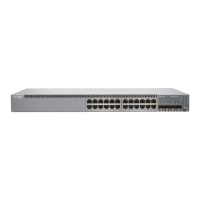Table 55: Estimated Values for Factors Causing Link Loss (continued)
Sample Link Loss (LL) Calculation ValuesEstimated Link Loss ValueLink-Loss Factor
This example assumes two splices. Loss fortwo splices:
2 (0.5 dBm) = 1 dBm.
0.5 dBmSplice
This example assumes the link is 2 km long. Fiber
attenuation for 2 km: 2 km (1 dBm/km) = 2 dBm.
Multimode—1 dBm/kmFiber attenuation
This example assumes the link is 2 km long. Fiber
attenuation for 2 km: 2 km (0.5 dBm/km) = 1 dBm.
Single-mode—0.5 dBm/km
1 dBm1 dBmClock Recovery Module
(CRM)
NOTE: For information about the actual amount of signal loss caused by
equipment and other factors, see your vendor documentation for that
equipment.
2. Calculate the (P
M
) by subtracting (LL) from (P
B
):
P
B
– LL = P
M
13 dBm – 0.5 dBm [HOL] – 5 (0.5 dBm) – 2 (0.5 dBm) – 2 km (1.0 dBm/km) – 1 dB
[CRM] = P
M
13 dBm – 0.5 dBm – 2.5 dBm – 1 dBm – 2 dBm – 1 dBm = P
M
P
M
= 6 dBm
The calculated power margin is greater than zero, indicating that the link has sufficient
power for transmission. Also, the power margin value does not exceed the maximum
receiver input power. Refer to the specifications for your receiver to find the maximum
receiver input power.
Related
Documentation
Understanding QFX Series Fiber-Optic Cable Signal Loss, Attenuation, and Dispersion
on page 150
•
Copper Cable Specifications for QFX5100-48T Switches
The QFX5100-48T switches have10GBASE-T interfaces that use various types of copper
network cables. To achieve optimal performance, you must use cables that conform to
IEEE 802.3-2012 specifications for connections for 10GBASE-T network ports.
Table 56 on page 154 lists the cable specifications for 10GBASE-T port on QFX5100-48T
switches.
153Copyright © 2016, Juniper Networks, Inc.
Chapter 9: Cable Specifications
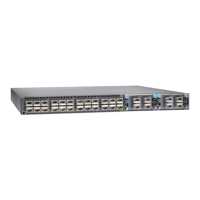
